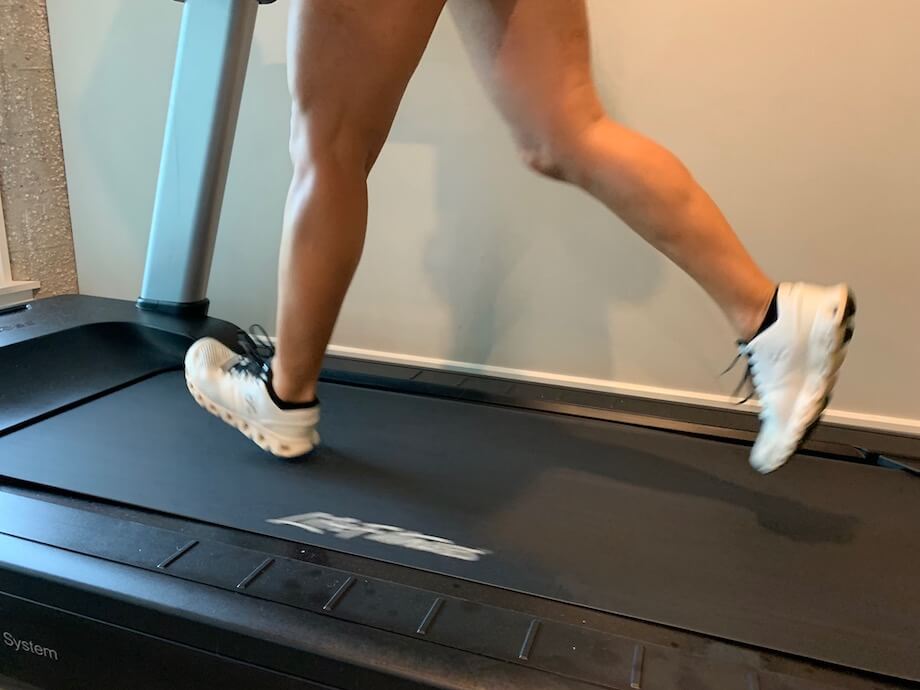If you’re new to running, you might wonder how often should you run, and you’re not alone. Runners of all levels are wondering the same thing, and honestly, the answer is different for everyone. Running is such a personalized sport. Your optimal running frequency is unique to you, based on your fitness level and running goals. Your training plan is all your own.
However, when designing your training schedule, there are a few factors to consider before mapping out your weekly mileage. In this article, we’ll take a look at the impact that running frequency has on your goals, and we’ll review how to find the sweet spot between running volume and the number of runs in a week. Let’s jump in.
How Often Should I Run?
The answer to that question will be different for everyone. The recreational runner will likely run less often than someone in the thick of marathon training. A good way to gauge how often you should run is by your running experience. As someone who has been a runner for most of her life, I’ve trained as a beginner, intermediate, and advanced runner multiple times over (nothing like pregnancy to humble your training plans!), and I can attest to the impact that experience has on training demands.
Beginners
New runners can start by running one to two days per week, with ample recovery time in between runs. You can start by running one or two miles twice weekly to build up your endurance and pace, and then slowly increase your running volume through frequency or distance.
Intermediate
Intermediate runners have a little more wiggle room when it comes to running frequency. Since they have more training under their belt, they can likely handle running three to five days per week. Aim for rest and strength training between your running days.
Advanced
In most cases, advanced runners can run up to five or six days per week with a low risk of injury or burnout. Make one of your runs an easy run to allow your body time for active recovery. Some elite runners may run every day, but it’s generally not recommended for the average runner.

Factors to Consider
The current Physical Activity Guidelines for Americans1 recommend 150 minutes of moderate-intensity physical activity per week (plus two days of strength training). Running is commonly a favorite way to log those minutes, I think in part to its individualized training aspects. It’s challenging, but you get to make it your own, especially when deciding how frequently you should run. A few factors to consider when scheduling your runs include the following:
Personal Goals
Your endgame goals play a significant role in your training plan’s design. For example, a competitive runner training for their tenth marathon will lace up their running shoes more often than a recreational runner who hits the trails to clear their mind after a long day at work. Both are meaningful goals, but one requires more running days than the other.
Running Experience
Like any fitness avenue, it’s important to gradually increase your running training as you develop physically and mentally. An experienced runner has developed the tools needed to efficiently and safely run more frequently during the week. If you’re just beginning, it’s critical to start conservatively and allow your body the time it needs to build strength and endurance.
Physical Fitness Level
Your fitness level also plays a major role in your running plans. If you don’t have much running experience but have consistently done other forms of exercise, you should have a good cardiovascular base to rely on during your runs.
The same goes for an experienced runner with a decreased fitness level. A runner who’s taken some time away from the sport may need to err on the side of caution while they rebuild their strength and endurance.
Time Constraints
We’ve all heard the saying, “There’s not enough time in the day,” and I think we’ve all been able to relate to that at some point in our lives. Time is precious, and sometimes we have to get strategic about our training schedule. If your calendar is slammed and you have to bend over backward to make it happen, chances are it will be challenging to stay committed. Find the days you have time to run, and write it down in pen on your calendar. Then, focus on the days you are scheduled to run and make sure they’re good-quality runs—quality over quantity, my peeps.
Injuries and Health Concerns
This one is a biggie. If you’re prone to injury or currently rehabbing an ailment, you should probably run less often and maybe even shorten your runs. Consider cross-training on your off days to get your cardio in while avoiding potential running injuries.
RELATED: Cross-Training for Runners
Age
Getting older is a cause for celebration. There’s no doubt about that. But it can also change the way we approach our fitness training. Generally, the older we get, the more time our bodies need to recover between sweat sessions. As a result, our bodies may not bounce back as quickly after a run with each passing birthday, and that may mean we need to space out our running days a little more.

How Can I Build Up My Running Duration?
Building up your running duration without overtraining takes balance. Overtraining puts you at risk of injury, so it’s vital to gradually add running time to your training schedule. Start with one or two runs per week and as you build stamina, increase to three runs, then four, and then five (depending on your goals).
Be Consistent
Consistency builds your aerobic base, improves your aerobic capacity, and strengthens your muscles. Design your training program and stick with it. You can find support from a certified personal trainer, running coach, or local running group.
Add a Long Run
To run longer, we have to practice running longer. A long run can help build your mental and physical capacity to rock those running goals even if you’re not a distance runner. But we can’t just go all in the right off the bat. Long run distances will vary among runners. Generally speaking, you can increase your long run by 5-10 minutes at a time.
Fuel Your Body
Putting in the work is key, but nourishing your body is essential. Make sure you get enough carbohydrates, protein, and fat to support your training demands. Your body depends on your nutrition for energy to rock your workout and repair muscle breakdown during recovery. If you have questions about your nutrition needs, a registered dietitian nutritionist can be a great asset to your training.
Recover, Recover, Recover
When building your running endurance, don’t forget to prioritize your recovery days. Our bodies are pretty incredible machines, but they’re not invincible. So make sure you get adequate sleep, stay hydrated, and take days off when needed.
How Often Should You Run: Final Thoughts
One of the most common questions new runners may think is how often should you run to reach your goals? Designing the frequency and volume of your training is a personal process based on your fitness level, running experience, and many other factors. And, of course, training plans can change over time as you get stronger and build stamina. Keep putting in the work. Every run brings you one step closer to reaching your goals.
- New runners should start with one or two runs per week.
- Rest is key to keeping your body healthy and ready for training.
- Cross-training can be an integral part of running training and keeping you injury-free.
- You can build up your running duration by gradually adding running days to your training log.
- If you’re limited on available days, you can add minutes to your scheduled runs to boost your weekly running volume.
- Elite runners may run every day, but it is generally not recommended.
How Often Should You Run FAQs
Is it OK to go running everyday?
The short answer is no. You might be tempted to run every day, but it’s important to remember that your body needs rest. No matter your current fitness level, running every day can take a toll on the body. Try to include cross-training workouts and sprinkle rest days in as needed.
Is running 30 minutes everyday enough?
Running for 30 minutes at a time is a great way to develop your cardiovascular system, reach your weight loss goals, and support your overall health. However, running every day can lead to burnout or overuse injuries. It’s essential to give your body time to recover between runs. Consider adding other forms of exercise, like strength training, to your training program.
Is running three times a week enough?
Yes, running three times per week can significantly impact your fitness level and influence many of your athletic goals. As you build strength and stamina, you may feel the need to increase how often you run during the week. Just be sure to schedule adequate rest days.
How many days per week should you run?
The number of days you should run per week can depend on several factors, including your running experience, fitness level, time constraints, and injury concerns. Start by running every other day and cross-training or strength training between runs.
References
- U.S. Department of Health and Human Services. Physical Activity Guidelines for Americans, 2nd edition. Washington, DC: U.S. Department of Health and Human Services; 2018.







